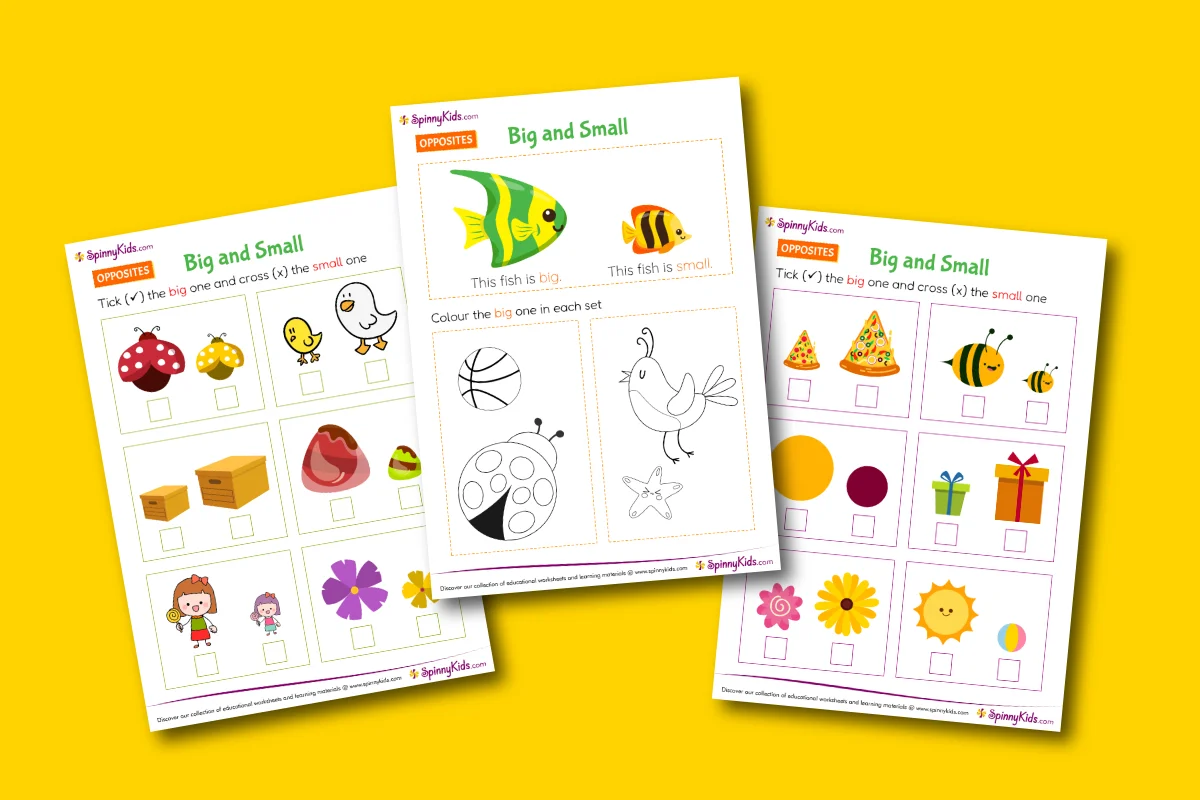Understanding the concept of big and small is one of the first mathematical and visual learning steps for preschoolers. It helps children develop observation, comparison, and reasoning skills while boosting their vocabulary.
Our Big or Small Worksheet collection is designed for nursery and kindergarten kids to recognize, compare, and identify the size differences between objects. These big small worksheets are colorful, interactive, and perfect for both classroom and home learning.
Whether your little learner is coloring pictures, circling the bigger object, or matching small and big objects — these big and small activity sheets make learning size comparison enjoyable and meaningful!
Why Teach the Concept of Big and Small Early?
Learning size comparison lays the foundation for understanding:
- Measurement (length, height, weight).
- Sorting and categorization skills.
- Mathematical thinking and logical reasoning.
- Everyday language concepts like “My ball is bigger than yours!” or “That tree is small.”
These skills are essential before children move on to numbers and advanced math topics.
Big and Small Worksheets
Our collection includes a variety of worksheets on big or small to suit different learning levels and activities:

Identify Big and Small Objects
Children observe pictures and color or tick the big or small object.
Example: A ball and a bug – color the big one.
Coloring Big and Small Worksheet
Kids love colors! Let them color big and small objects in different shades.
Example: Color the big fish blue and the small one red.
Match the Objects
Match big with small object, like a big apple with a small apple or a big car with a small car.
Helps reinforce visual recognition.
Biggest and Smallest Worksheets
Perfect for slightly older preschoolers and kindergarten kids — identify the biggest and smallest among three or more objects.
Bigger or Smaller Worksheets
Compare two objects and tick the bigger or smaller one.
Example: Which balloon is bigger?
Also Download:
Thick and Thin Worksheets
Pencil Control Worksheets
Big or Small Learning Objectives
By using these Big and Small Worksheets, children will:
- Understand the concept of big, small, bigger, smaller, biggest, and smallest.
- Compare objects based on their size.
- Improve visual discrimination and fine motor skills.
- Learn new vocabulary related to sizes.
- Develop early math reasoning through fun observation tasks.
The big and small worksheets for nursery are perfect for early learners to grasp the concept through visual clues and repetition. While the big and small worksheets for kindergarten reinforce understanding through fun exercises and are aligned with early learning standards.
More Fun Big and Small Activities
Complement the worksheets with real-life activities:
- Toy sorting: Group big and small toys together.
- Nature walk: Find big and small leaves or stones.
- Story time: Read books with size comparison themes.
- Art project: Draw a big sun and a small star.
These activities make the big and small concept worksheet learning come alive beyond the classroom!
Benefits of Using Big and Small Worksheets
- Builds concept clarity through visuals and repetition
- Improves observation and comparison skills
- Develops fine motor control through coloring and tracing
- Encourages critical thinking at an early age
- Keeps kids engaged through play-based learning
Teaching the concept of big and small through worksheets is an exciting way to introduce early math and logical thinking to preschoolers. Our Big and Small Worksheet collection includes a wide range of printable sheets such as bigger or smaller, biggest and smallest, and colouring big and small activity sheets — all crafted to make learning fun and interactive.
Whether you’re a parent, teacher, or homeschooler, these big and small concept worksheets are the perfect tools to help children recognize, compare, and enjoy learning about the world of sizes!

